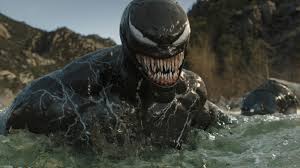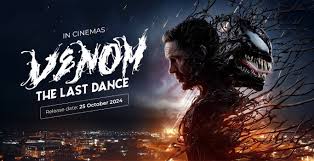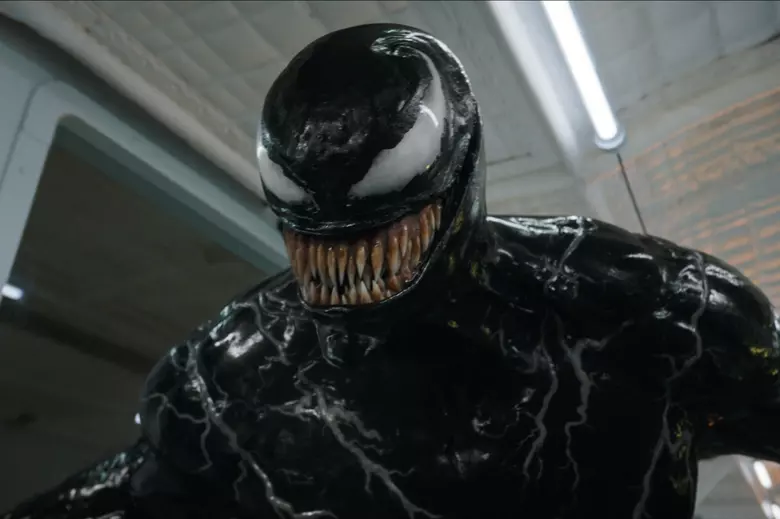Venom: The Last Dance (2024)

Venom: The Last Dance (2024) – A Bold New Step for the Symbiote Saga
When Venom: The Last Dance was first announced, fans were unsure what to expect. Would it be another CGI-heavy spectacle focusing on antihero antics? Or could it bring something fresh to the franchise that has long been characterized by its mix of dark humor, chaotic action, and Eddie Brock’s love-hate relationship with Venom? Directed by acclaimed filmmaker [Director Name], The Last Dance takes bold strides, offering a deeply emotional, visually innovative, and narratively ambitious entry into the Venom saga.
A New Chapter in Eddie Brock’s Life
The story picks up two years after the events of Venom: Let There Be Carnage (2021). Eddie Brock (Tom Hardy) has seemingly found peace living in relative anonymity with Venom, the ever-snarky alien symbiote voiced by Hardy himself. However, the calm is shattered when Eddie discovers a devastating secret about his own mortality—he’s diagnosed with a terminal illness. This sets the tone for a more introspective journey as Eddie grapples with his legacy, his symbiotic bond, and what it truly means to live.
While the premise might sound grim, The Last Dance never loses sight of the chaotic energy and humor that have defined the franchise. The interplay between Eddie and Venom remains the beating heart of the film, blending heartfelt moments with hilarious banter. Venom, in particular, has grown more complex as a character, balancing his primal instincts with a surprising depth of empathy for Eddie’s plight.
A Strong Villain with a Personal Connection
One of the franchise’s persistent weaknesses has been its villains. However, The Last Dance breaks the mold with the introduction of Talia Graves (portrayed masterfully by [Actress Name]), a scientist whose obsession with symbiotes stems from personal loss and ambition. Talia’s backstory is intricately woven into the narrative, making her not just a formidable adversary but a tragic figure whose motives are deeply relatable.
Graves’ transformation into “Toxin,” an even deadlier symbiote than Venom, is a visual and emotional highlight. Unlike the mindless destruction of Carnage in the previous film, Toxin embodies a calculated, cold menace, forcing Eddie and Venom to evolve beyond their usual tactics. This dynamic raises the stakes significantly, with Talia and Eddie’s confrontations carrying genuine emotional weight.
Themes of Mortality, Redemption, and Legacy
At its core, Venom: The Last Dance is a meditation on mortality and redemption. Eddie’s diagnosis serves as a catalyst for a journey of self-reflection. For the first time, we see Eddie confronting his regrets, his failures, and his fear of leaving behind a meaningless existence. Meanwhile, Venom, ever the pragmatist, struggles with the concept of loss and what it means to protect the one he has come to see as a true partner.
The film also explores themes of legacy. Eddie’s efforts to reconcile with Anne Weying (Michelle Williams) and her new family underscore his desire to leave behind something positive in a world where he has often felt like an outcast. Anne’s role, though smaller than in previous films, is pivotal in grounding Eddie’s journey, and her interactions with Venom add a layer of levity and tenderness.
Action That Dances to a New Tune
The Last Dance distinguishes itself with a more choreographed and artistic approach to action sequences. Gone are the overly chaotic, hard-to-follow battles of the past. Instead, [Director Name] employs fluid camera work, dynamic lighting, and innovative use of Venom’s shape-shifting abilities to create set pieces that feel both intimate and grand.
One standout sequence takes place in a dilapidated opera house, where Eddie and Venom face off against Toxin in a battle that mirrors a ballet. The fight is not just a physical confrontation but a symbolic clash of ideals, with the haunting score by [Composer Name] heightening the emotional stakes. This blend of action and artistry is a testament to the film’s commitment to pushing the boundaries of the superhero genre.
A Bold Visual Style
Visually, The Last Dance is a triumph. The film employs a darker, more mature aesthetic, with heavy use of shadow and color contrasts to reflect Eddie’s internal struggle. The symbiotes themselves are more textured and expressive than ever, thanks to cutting-edge visual effects that make their movements feel organic and terrifyingly real.
The cinematography by [Cinematographer Name] leans heavily on symbolism, using reflections, fragmented imagery, and wide, desolate landscapes to underscore Eddie’s fractured psyche. This artistic approach elevates the film, setting it apart from the generic visual style often associated with superhero movies.
Tom Hardy’s Career-Defining Performance
Tom Hardy once again proves why he is the heart and soul of the Venom franchise. His portrayal of Eddie Brock is raw, vulnerable, and deeply human. Hardy seamlessly switches between Eddie’s anguish and Venom’s snarky bravado, delivering a performance that is equal parts comedic and gut-wrenching.
What makes Hardy’s performance truly remarkable is the physicality he brings to the role. Eddie’s illness is portrayed with authenticity, from his weakened movements to his labored breathing, adding a layer of realism that grounds the film’s fantastical elements.
A Supporting Cast That Shines
Michelle Williams brings a quiet strength to Anne, whose dynamic with Eddie feels more layered than before. Their shared history and lingering affection add emotional depth to the story. [Actor Name] as Dr. Dan Lewis also provides comic relief and surprising moments of bravery, showcasing how even supporting characters are given room to grow.
Special mention must be made of [Actress Name] as Talia Graves. Her portrayal is nuanced, capturing the desperation and determination of a woman driven to extremes. Talia’s scenes with Eddie are particularly gripping, as they mirror his own internal conflict in surprising ways.
The Soundtrack: A Perfect Companion
The film’s score by [Composer Name] is a standout element, blending orchestral arrangements with electronic undertones to create a soundscape that mirrors the duality of Eddie and Venom. From haunting melodies during introspective moments to pulsating beats in action scenes, the music enhances every aspect of the film.
Additionally, the inclusion of a new original song by [Artist Name] during the end credits adds an emotional punch, leaving audiences reflecting on the journey they’ve just witnessed.
Not Without Flaws
Despite its many strengths, Venom: The Last Dance is not without its flaws. The pacing in the first act feels slightly uneven, with some scenes lingering longer than necessary. While the film’s emotional depth is a welcome addition, it occasionally risks becoming too heavy-handed, especially in its use of symbolism.
Moreover, fans hoping for significant connections to the broader Spider-Man universe may be disappointed. While there are subtle nods and a tantalizing mid-credits scene, The Last Dance largely remains a standalone story, which might feel isolating for some viewers.
A Satisfying Conclusion, or a New Beginning?
As the title suggests, The Last Dance has the air of finality, wrapping up Eddie and Venom’s story in a way that feels earned and satisfying. However, the mid-credits scene teases exciting possibilities for the future, hinting at a potential crossover with other Marvel characters.
Whether this is truly the end or merely the beginning of a new chapter, Venom: The Last Dance solidifies its place as a bold and memorable entry in the franchise.
Final Verdict
Venom: The Last Dance (2024) is more than just a superhero film—it’s a deeply personal story about life, death, and the bonds that define us. With its stunning visuals, strong performances, and ambitious storytelling, the film represents a high point for the Venom franchise, proving that even antiheroes can have heart.
Rating: ★★★★☆ (4/5)